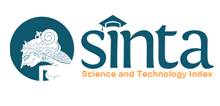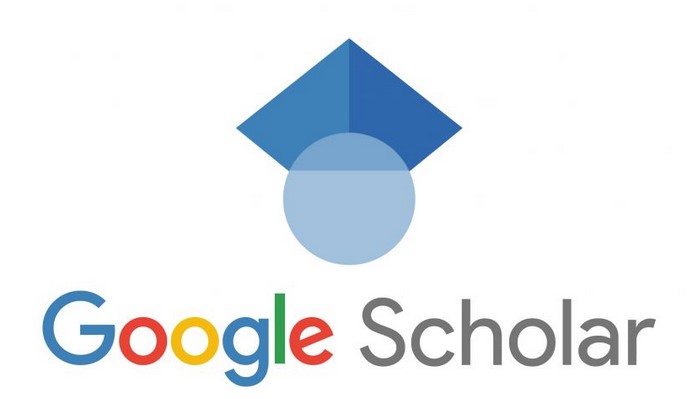Keywords
Education, Suku Anak Dalam, Indigenous People
Document Type
Article
Abstract
The Suku Anak Dalam (SAD) community in Sekaladi Village, Jambi, experiences inequality in access to education, a fundamental right of every citizen. This disparity has caused delays in their educational development, affecting their understanding of national values and human rights, prompting the Village Innovation Program team from the University of Jambi to implement an educational program called Sekolah Pancasila. This research aims to enhance SAD children's understanding of the values of Pancasila and the concept of Indonesia. This research used qualitative methods with an interactive and case study approach. The research location is in Jambi Province. The results show that the implementation of Pancasila School includes various activities such as literacy and numeracy, community service, civil administration services, and the dissemination of human rights reinforcement through the legal system. Implementing the Pancasila School program has effectively addressed educational disparities within the SAD community. This initiative aims to familiarise SAD children with Pancasila and Indonesian identity while enhancing their critical thinking and participatory skills as empowered citizens.
First Page
142
Last Page
158
Page Range
142-158
Issue
1
Volume
22
Digital Object Identifier (DOI)
10.21831/jc.v22i1.1341
Recommended Citation
Simaremare, T. P., Aulia, N. Q., Nst, I. B., Yulias, P. O., As Shalikhah, S. W., Gustiani, E., & Widodo, T. (2025). Sekolah Pancasila: An educational empowerment effort for the Suku Anak Dalam in Sekaladi, Jambi. Jurnal Civics: Media Kajian Kewarganegaraan, 22(1), 142-158. https://doi.org/10.21831/jc.v22i1.1341
References
Adiyadmo, D. A., & Zani, Y. (2024). Berdaya dan berbudaya, Tim Pro-IDe UNJA mengedukasi SAD Sekaladi melalui sekolah Pancasila. https://www.unja.ac.id/berdaya-dan-berbudaya-tim-pro-ide-unja-mengedukasi-sad-sekaladi-melalui-sekolah-pancasila/
Ajayi, L. (2010). How asynchronous discussion boards mediate learning literacy methods courses to enrich alternative-licensed teachers’ learning experiences. Journal of Research on Technology in Education, 43(1), 1–28. https://doi.org/10.1080/15391523.2010.10782559
Bada, S. O. (2015). Constructivism learning theory: A Paradigm for teaching and learning. IOSR Journal of Research & Method in Education, 5(6), 66–70. https://doi.org/10.9790/7388-05616670
Beck, J., & Rodrigo, Ma. M. T. (2014). Understanding wheel spinning in the context of affective aactors (pp. 162–167). https://doi.org/10.1007/978-3-319-07221-0_2 0
Bernhard, J. (2017). Beyond active learning: Critical factors for learning in labs. 2017 Research in Engineering Education Symposium, REES 2017.
Beyleveld, D. (2014). Human dignity and human rights in Alan Gewirth’s moral philosophy. In The Cambridge Handbook of Human Dignity (pp. 230–239). Cambridge University Press. https://doi.org/10.1017/CBO9780511979033.029
Bonjour, T., Haliem, M., Aggarwal, V., Kejriwal, M., & Bhargava, B. (2024). Multi-agent game domain: Monopoly. In T. Boult & W. Scheirer (Eds.), A unifying framework for formal theories of novelty. Synthesis lectures on computer vision (pp. 97–105). Springer. https://doi.org/10.1007/978-3-031-33054-4_7
Budiman, A., Samani, M., Rusijono, R., Setyawan, W. H., & Nurdyansyah, N. (2020). The development of direct-contextual learning: A new model on higher education. International Journal of Higher Education, 10(2), 15–26. https://doi.org/10.5430/ijhe.v10n2p15
Cain, A., Grundy, J., & Woodward, C. J. (2018). Focusing on learning through constructive alignment with task-oriented portfolio assessment. European Journal of Engineering Education, 43(4), 569–584. https://doi.org/10.1080/03043797.2017.1299693
Chen, S.-Y., Tsai, J.-C., Liu, S.-Y., & Chang, C.-Y. (2021). The effect of a scientific board game on improving creative problem solving skills. Thinking Skills and Creativity, 41, 100921. https://doi.org/10.1016/j.tsc.2021.100921
Chi, M. T. H., & Wylie, R. (2014). The ICAP framework: Linking cognitive engagement to active learning outcomes. Educational Psychologist, 49(4), 219–243. https://doi.org/10.1080/00461520.2014.965823
Doolittle, P., Wojdak, K., & Walters, A. (2023). Defining active learning: A restricted systemic review. Teaching and Learning Inquiry, 11. https://doi.org/10.20343/teachlearninqu.11.25
Du, H., Rosson, M. B., & Carroll, J. M. (2010). Bringing back channels up front: Towards an active learning environment. Proceedings of the 16th ACM International Conference on Supporting Group Work, GROUP’10, 333–334. https://doi.org/10.1145/1880071.1880137
Hidayat, E. S. (2019). Analisis implementasi kebijakan administrasi kependudukan pada dinas kependudukan dan pencatatan sipil Kabupaten Garut. Dinamika: Jurnal Ilmiah Ilmu Administrasi Negara, 5(4), 8–16. https://jurnal.unigal.ac.id/dinamika/article/view/1741
Jocom, Z. Y., Lambelanova, R., & Sinurat, M. (2021). Evaluasi kebijakan pelayanan kartu tanda penduduk elektronik pada Suku Dinas Kependudukan dan Pencatatan Sipil Kota Jakarta Utara Provinsi DKI Jakarta. VISIONER : Jurnal Pemerintahan Daerah Di Indonesia, 13(2), 335–350. https://doi.org/10.54783/jv.v13i2.437
Kalamas Hedden, M., Worthy, R., Akins, E., Slinger-Friedman, V., & Paul, R. (2017). Teaching sustainability using an active learning constructivist approach: Discipline-specific case studies in higher education. Sustainability, 9(8), 1320. https://doi.org/10.3390/su9081320
Kallemeyn, L., Baura, G., Fils-Aime, F., Grabarek, J., & Livas, P. (2021). Engineering curriculum rooted in active learning: Does it promote engagement and persistence for women? ASEE Annual Conference and Exposition, Conference Proceedings.
Kimonen, E., Nevalainen, R., & Schoen, L. T. (2017). Active learning for educational change. In Reforming Teaching and Teacher Education (pp. 225–252). SensePublishers. https://doi.org/10.1007/978-94-6300-917-1_9
Kurniawati, E. (2021). Penerapan media pembelajaran berbasis permainan monopoli untuk meningkatkan prestasi belajar PPKn. Pedagogi : Jurnal Pendidikan Dan Pembelajaran, 1(1), 1–5. https://doi.org/10.56393/pedagogi.v1i1.74
Lee, E., & Hannafin, M. J. (2016). A design framework for enhancing engagement in student-centered learning: own it, learn it, and share it. Educational Technology Research and Development, 64(4), 707–734. https://doi.org/10.1007/s11423-015-9422-5
Lytras, M. D., & Housawi, A. (2023). Active learning in healthcare education, training, and research: A digital transformation primer. In Active Learning for Digital Transformation in Healthcare Education, Training and Research. https://doi.org/10.1016/B978-0-443-15248-1.00006-0
McPherson, J. (2020). Active learning principles with illustrations from Shakespeare education. The Clearing House: A Journal of Educational Strategies, Issues and Ideas, 93(1), 42–49. https://doi.org/10.1080/00098655.2019.1705752
Mercer, N., Warwick, P., Kershner, R., & Staarman, J. K. (2010). Can the interactive whiteboard help to provide ‘dialogic space’for children’s collaborative activity? Language and Education, 24(5), 367–384.
Mostowfi, S., Mamaghani, N. K., & Khorramar, M. (2016). Designing playful learning by using educational board game for children in the age range of 7-12:(A case study: recycling and waste separation education board game). International Journal of Environmental and Science Education, 11(12), 5453–5476. http://www.ijese.net/makale/718.html
Mulyatno, C. B., & Yosafat, Y. (2022). Praktik bergotong-yoyong dalam hidup bermasyarakat sebagai pengamalan nilai-nilai Pancasila. Jurnal Kewarganegaraan, 6(2), 4624–4634. https://journal.upy.ac.id/index.php/pkn/article/view/3998
Mustika, D., & Dastina, W. (2020). Religious, economic, and political values shifting in inheritance system of Suku Anak Dalam. Ahkam: Jurnal Ilmu Syariah, 20(1), 49–78. https://doi.org/10.15408/ajis.v20i1.13568
Naisau, P. B., Jampel, I. N., & Suartama, I. K. (2021). Pengembangan media permainan Ludo Word Game dalam pembelajaran kooperatif STAD pada mata pelajaran IPS di SMP. Jurnal Edutech Undiksha, 9(1), 158–166. https://doi.org/10.23887/jeu.v9i1.32914
Noy, S., Capetola, T., & Patrick, R. (2021). The wheel of fortune as a novel support for constructive alignment and transformative sustainability learning in higher education. International Journal of Sustainability in Higher Education, 22(4), 854–869. https://doi.org/10.1108/IJSHE-08-2020-0289
O’Neill, D. K., & Holmes, P. E. (2022). The power of board games for multidomain learning in young children. American Journal of Play, 14(1), 58–98. https://eric.ed.gov/?id=EJ1357958
Patil, Y. M., & Kumbhar, P. D. (2021). Learning by gamification: An effective active learning tool in engineering education. Journal of Engineering Education Transformations, 34(Special Is), 447–453. https://doi.org/10.16920/jeet/2021/v34i0/157194
Putra, A. P., Arafik, M., & Pratiwi, I. (2021). Use of nearpod to enhance student engagement in online learning. Proceedings - 2021 7th International Conference on Education and Technology, ICET 2021, 298–303. https://doi.org/10.1109/ICET53279.2021.9575062
Rachmaida, F., & Mutiarani, M. (2022). The use of spinning wheel games to improve students’ writing procedural texts. Journal of Languages and Language Teaching, 10(4), 530–540. https://doi.org/10.33394/jollt.v10i4.5766
Rahmawati, H., Pujiastuti, P., & Cahyaningtyas, A. P. (2023). Kategorisasi kemampuan berpikir kritis siswa kelas empat sekolah dasar di SD se-Gugus II Kapanewon Playen, Gunung Kidul. Jurnal Pendidikan dan Kebudayaan, 8(1), 88–104. https://doi.org/10.24832/jpnk.v8i1.3338
Reformasi, T. P. W., & Istiyono, E. (2024). The effects of using truth or dare card media assisted by physics spinning wheel on physics cognitive learning output and learning interest. 020002. https://doi.org/10.1063/5.0188499
Riyanto, A. (2015). Kearifan Lokal-Pancasila: Butir-butir Filsafat Keindonesiaan. PT Kanisius.
Samsu, S., Rusmini, R., Kustati, M., Ritonga, M., Novia Maulana, A., & Zulmuqim, Z. (2022). Tumenggung leadership and educational model in leading indigenous people: Suku Anak Dalam portrait. Cogent Social Sciences, 8(1). https://doi.org/10.1080/23311886.2022.2123634
Sukmawati, S., Jamaluddin, J., Yasinta, Y., Tantri, T., Sisi, S., Wahyuni, S., Fifi, F., Gita, G., Hildayanti, H., & Bela, B. (2022). Penerapan media monopoli Pancasila untuk meningkatkan hasil belajar siswa pada mata pelajaran PPKn. Jurnal Kewarganegaraan, 6(1), 720–724. https://journal.upy.ac.id/index.php/pkn/article/view/2605
Sutarto, Harmi, H., Warsah, I., Apriani, E., & Nurjannah. (2024). The structural model of influential interplay among cultural practices, social support, economic factors, and the Suku Anak Dalam community’ perceptions of religious education | el modelo estructural de la interacción influyente entre las prácticas cultur. International Journal of Sociology of Education, 13(3), 214–235. https://doi.org/10.17583/rise.15119



